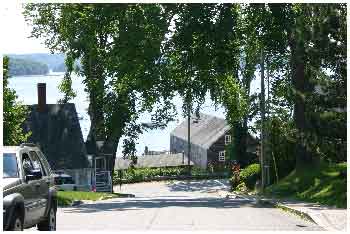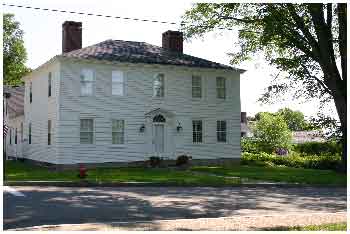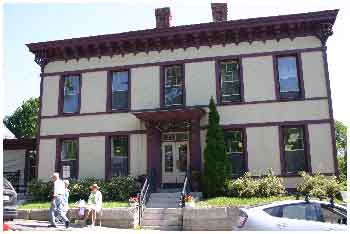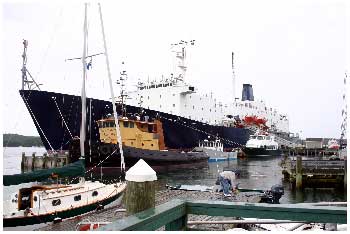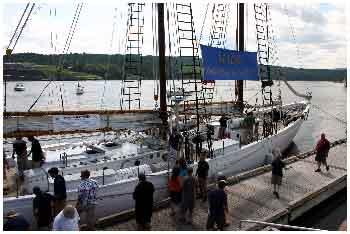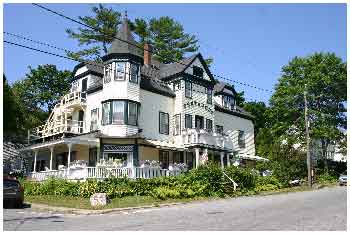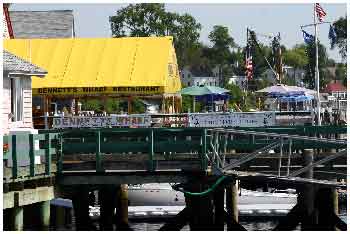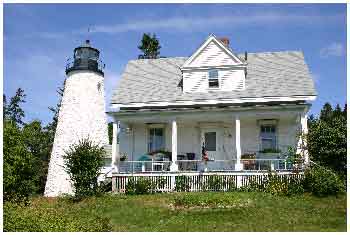Road Trip to Castine, ME - July 2012Article and Photos courtesy of Dick Carlson |
||||
|---|---|---|---|---|
| Castine is a village whose quiet historic elegance belies an eventful, vivid past. The town located at the entrance to the Penobscot River was initially settled as a trading post (Fort Pentagoet in the 17th century) by the Pilgrims of Plymouth (Massachusetts), and later named after the Baron de St. Castine, a French nobleman who married Macdocawando, a Penobscot Indian princess and reigned as a feudal lord/Indian chief over Maine’s eastern coast for many decades.
Because of its strategic location, the town was occupied by the British, French and Dutch. An entire American Fleet was lost in 1779 during the American Revolution, attempting to recapture Castine from the British. Writers describe Castine as "perfectly preserved". Even the trees that arch high above Main Street’s Federalist style houses and shops survived the blight that felled elms elsewhere in New England. Main street practically cascades into the harbor at Castine.
Castine’s post office is said to be the oldest operating post office in the country.
Castine is home to the Maine Maritime Academy which occupies the actual site of the British barracks and keeps a training ship anchored at the town dock.
On the waterfront is the massive academy training ship "State of Maine", on which they travel to Norway, the Med, and the Caribbean on training visits, as well as the veteran Arctic exploration schooner "Bowdoin", a classic wooden vessel designated as a National Historic Landmark. The double-planked, eighty-four-foot Bowdoin was launched in 1921 from a shipyard in East Boothbay and made fifty-four trips to the Arctic under Admiral Donald B. MacMillian.
The Pentagoet Inn is a very Victorian summer hotel with a turrent, gables and a wraparound porch.
Castine Inn serves up crabmeat cakes in mustard sauce and chicken and leek potpie. Lunch and dinner menu includes beef tenderlin carpaccio seasoned with coriander and cumin with tarragon goat cheese and greens for starters, Kalamata olive-crusted salmon with caponata and yellow pepper-grapefruit sauce and of course, lobster with wild mushroons, leeks, corn and tarragon-shallot sauce. Two YUMS Up!
Dennett’s Wharf on Sea Street, off the town dock, is an open-framed waterside structure said to have been built as a bowling alley after the Civil War. Seafood, smoked fish, and seafood pasta salads with waterside dining.
Dyce Head Light, built in 1828, was intended to guide mariners into Castine harbor and into the mouth of the Penobscot River toward Bangor. A fourth-order Fresnel lens was installed in 1858. It was build while Andrew Jackson was President of the United States.
More on Castine, Maine here: http://en.wikipedia.org/wiki/Castine,_Maine
Nova Hollandia. Go here to read about it: http://www.fishermensvoice.com/archives/0709historiccastinepart1.html |
